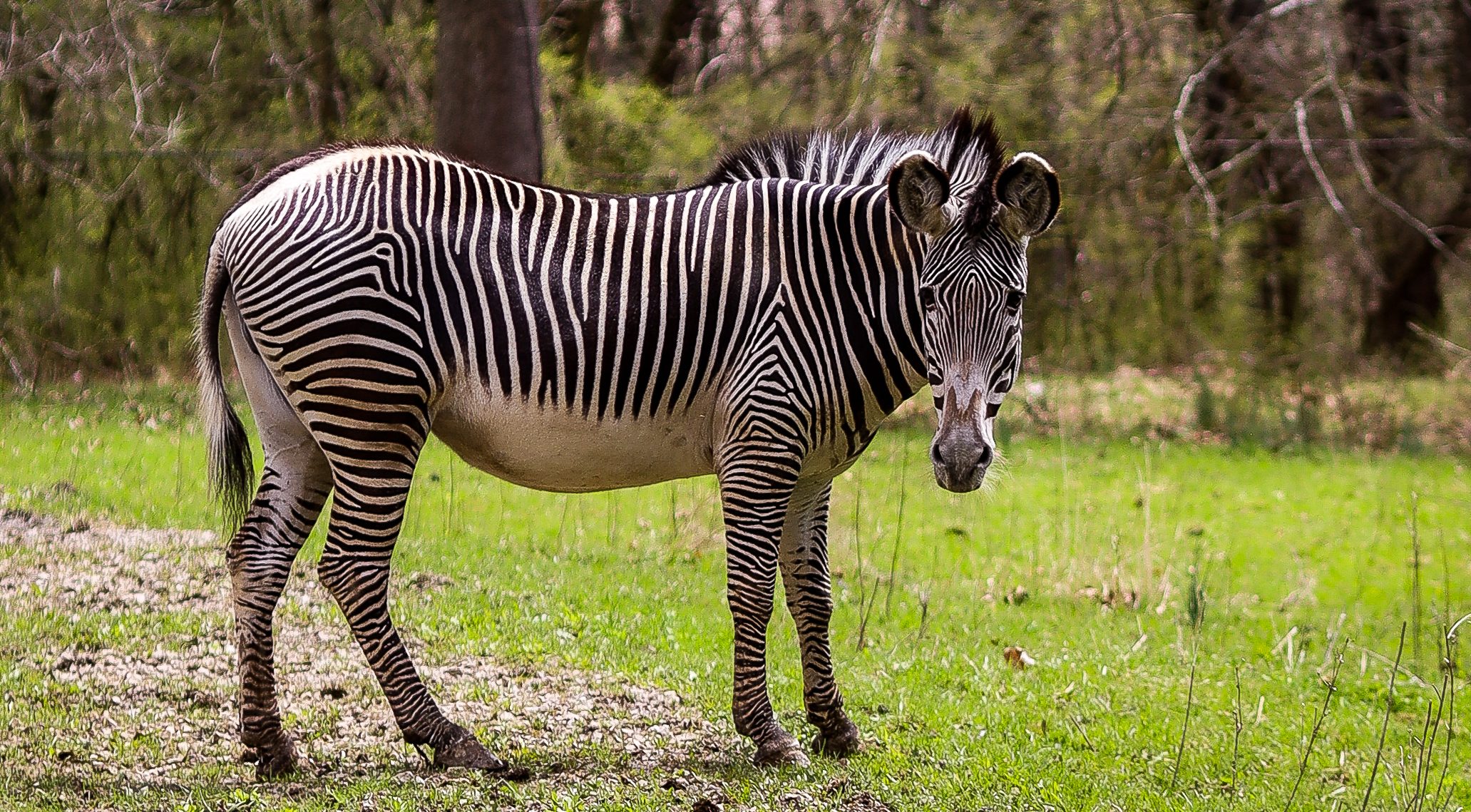Grevy’s Zebras ~
Grevy’s zebras are the largest species of zebra and are native to arid grasslands of Kenya and Ethiopia. Grevy’s zebras can be distinguished from other zebra species by their thin pinstripe pattern, tall stature, large donkey-like ears, and donkey-like vocalizations. In the wild, Grevy’s zebras are far more solitary than other zebras, with males defending territories that only females and young, non-breeding males can cross through. The Grevy’s zebra feeds upon dry grasses and some leaves. Due to the arid habitat that they live in, the Grevy’s zebra has specially adapted kidneys that enable them to drink water only once every five days if needed during drought conditions.
The Grevy’s zebra is endangered in the wild due to historically high hunting levels as well as habitat loss due to competition with livestock for water resources. The introduction of the invasive mesquite plant has impacted the grass vegetation that the Grevy’s zebra relies upon as well, and now there are less than 2,500 individuals remaining. The Good Zoo participates in the Grevy’s zebra Species Survival Plan breeding program with other Association of Zoos and Aquariums accredited institutions to ensure a sustainable population of this rare species in human care.
We care for an older male and female pair of Grevy’s zebras at the zoo named Huru and Samburu. The zebras eat a pelleted horse diet as well as hay. For enrichment the zebras enjoy brushes they can rub against, boomer balls, a variety of substrates but particularly fresh sand to roll in, and high-fiber leaf-eater biscuits that we use to positively reinforce behaviors during training.

